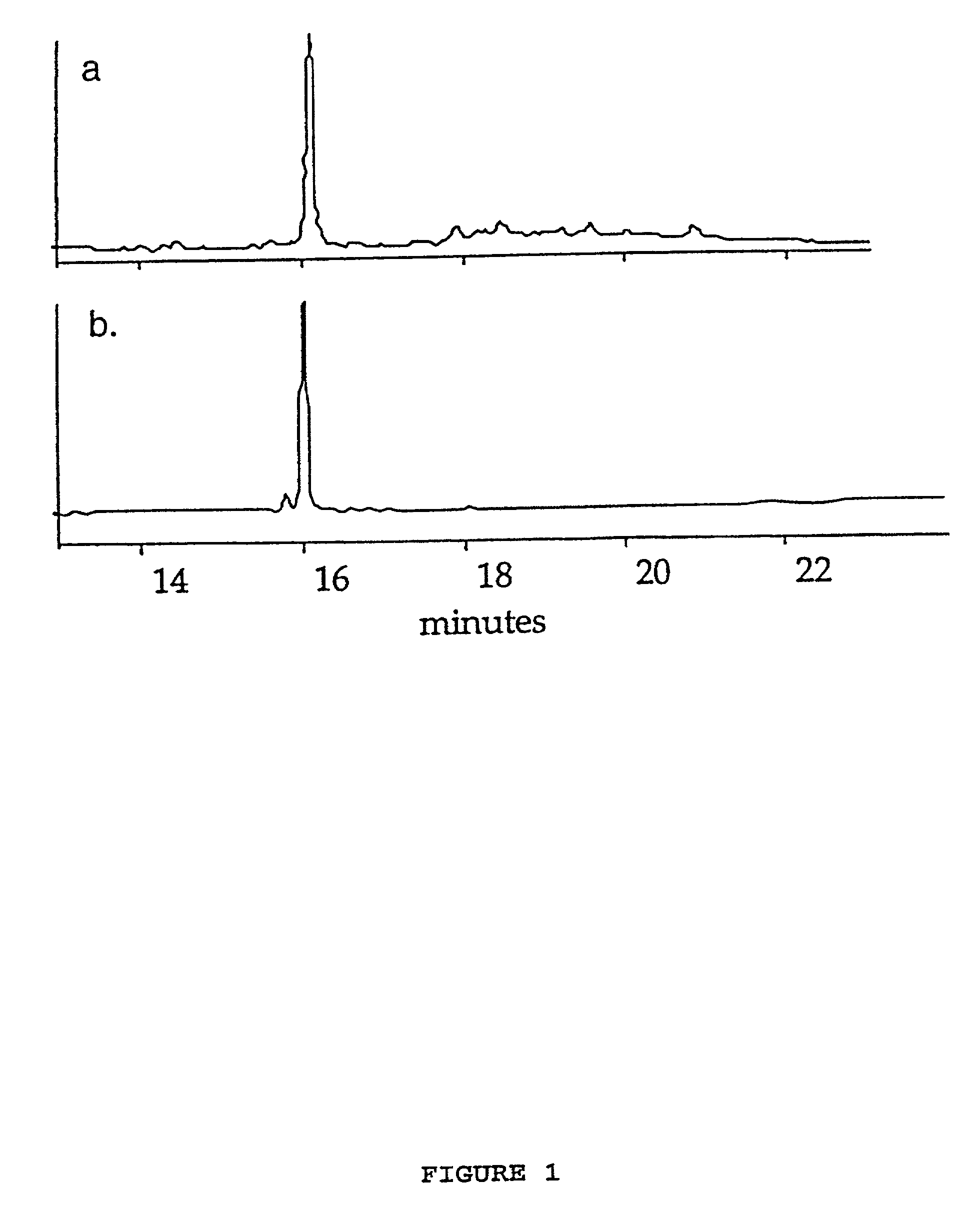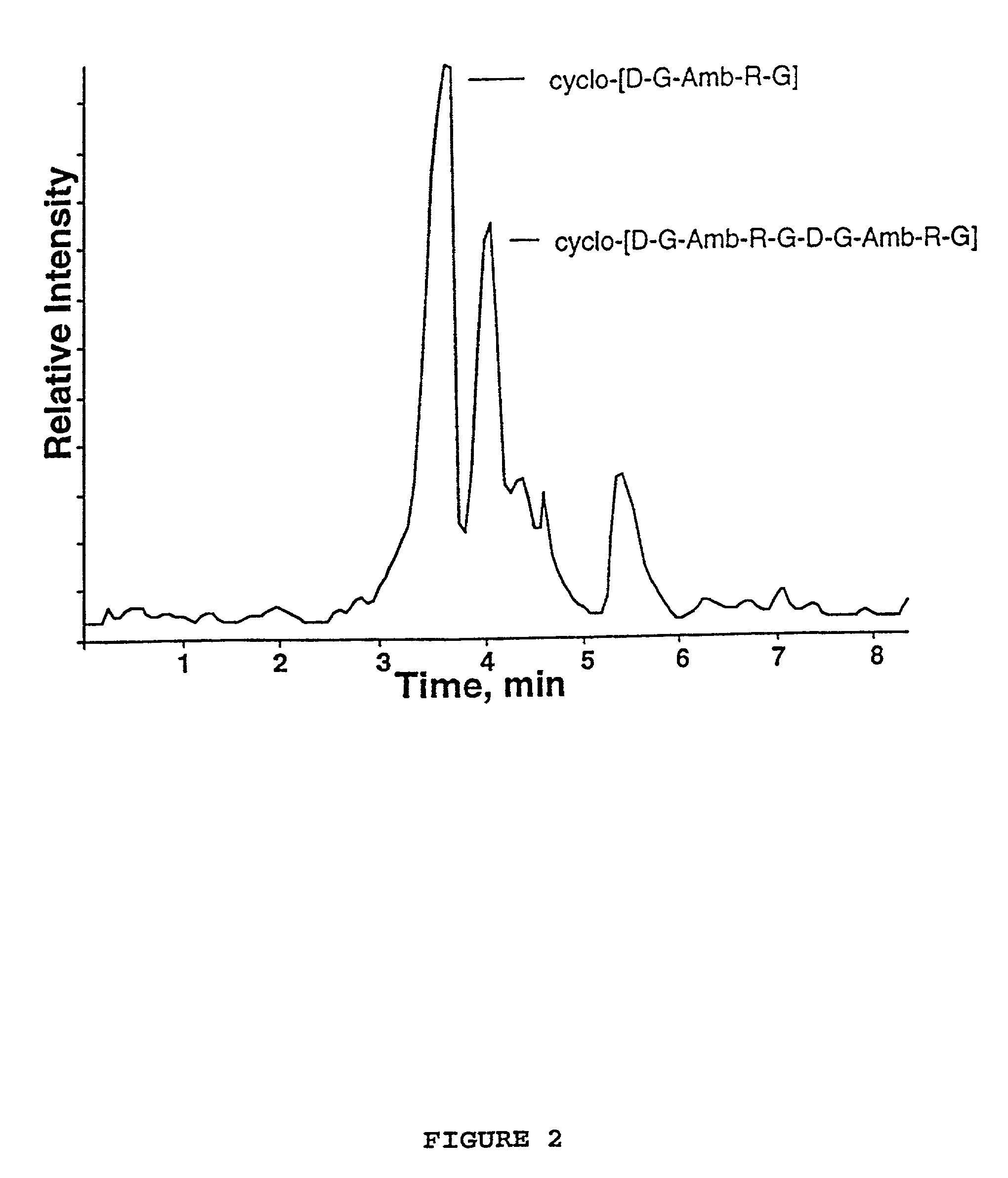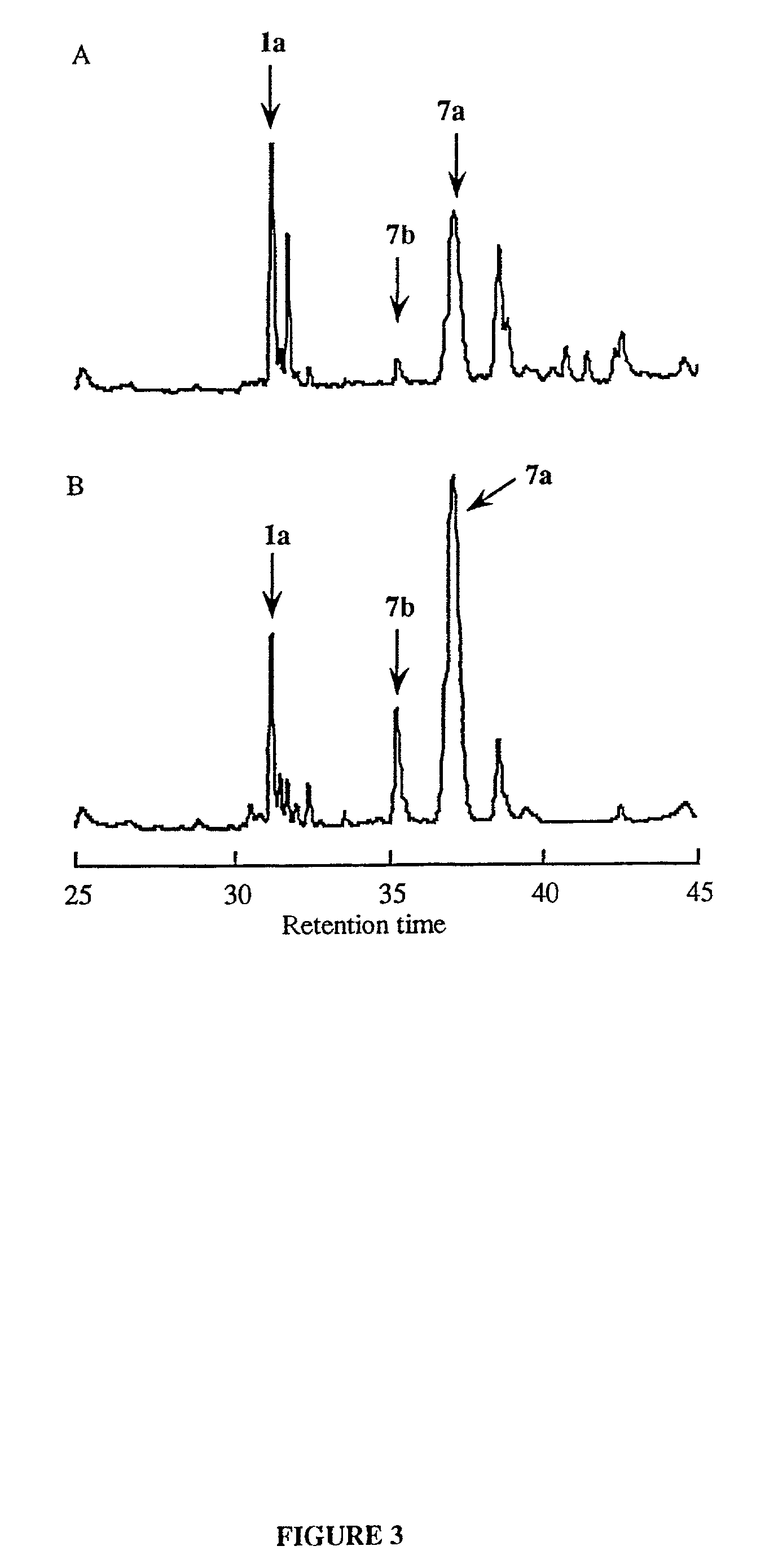Synthesis of cyclic peptides
a cyclic peptide and peptide technology, applied in the field of cyclic peptide synthesis, can solve the problems of short half-life in the body, inability to synthesise cyclic peptides, and inability to meet the needs of a wide range of applications, so as to facilitate the cyclisation reaction
- Summary
- Abstract
- Description
- Claims
- Application Information
AI Technical Summary
Benefits of technology
Problems solved by technology
Method used
Image
Examples
example 1
Peptide Cyclisation Auxiliaries
Backbone Substitution
[0139]N-substitution has the potential to alter the cis-trans equilibrium favouring more cis conformations and enhancing cyclisation yields:
[0140]
[0141]We have examined the effect of the number and position of N-methylations on cyclisation yield of tetraglycine Eight linear tetrapeptides were synthesised, including all permutations of glycine and sarcosine (N-methyl glycine) at the three C-terminal residues. These are summarised in Table 3.
[0142]
TABLE 3Linear N-substituted Tetraglycines andCorresponding Yields of CyclisationLinear tetrapeptideSEQ ID NO:Yield of cyclisationGly-Gly-Gly-Gly6Gly-Gly-Gly-Sar78%Gly-Gly-Sar-Gly811%Gly-Sar-Gly-Gly91%Gly-Gly-Sar-Sar1018%Gly-Sar-Gly-Sar112%Gly-Sar-Sar-Gly1213%(16%*)Gly-Sar-Sar-Sar13~5%*Yield of cyclisation for the corresponding N-HMB substituted linear tetraglycine, i.e., where sarcosine is replaced by [—N(HMB)—CH2—CO—].
[0143]The yield for each cyclisation was calculated from the weight of i...
experimental to example 1
[0152]This section describes the experimental details for preorganising peptides prior to cyclisation via N-substitution.
Date in Table 3
[0153]Boc-Sar-Merrifield resin was prepared as follows: Boc-Sar-OH (380 mg, 2 mmole) was dissolved in 2 mL H2O containing Cs2CO3 (326 mg, 1 mmole). The mixture was lyophilised and residue taken up in DMF (5 mL). The solution is added to Merrifield resin (2.7 gr, 0.7 mmol / gr) and heated to 50° C. overnight. The resin is filtered, washed and dried (3.05 gr, 0.65 mmole / gr). The tetrapeptides were assembled using in situ neutralisation protocols. After assembly the peptides were cleaved using HF / p-cresol (9 / 1) at 0° C. for 1 hour. The HF was then evaporated and the product precipitated with cold ether (10 mL). After the ether washes (3×10 mL) the crude peptides were dissolved in water and purified by HPLC using 100% water (0.1% TFA).
Cyclisation (Table 3)
[0154]The purified peptides (0.1 mmole) were dissolved in 100 mL DMF. BOP (133 mg, 0.3 mmole) was add...
example 2
Ring Contraction
[0157]Another approach to overcoming the problems in the solution and solid phase synthesis of small cyclic peptides is to utilise novel ring contraction chemistry. As previously noted, the preferred extended conformation and rigidity of amide bonds is a problem in small peptide cyclisation. By initially forming a larger, more flexible ring, through the inclusion of a flexible “linker unit”, the potential for end-to-tail cyclisation is enhanced by increasing the effective concentration of the C- and N-terminus. The desired C- and N-termini are then appropriately positioned to “snap shut” in a ring contraction reaction. This is shown schematically in Scheme 5.
[0158]
Ring Contraction Chemistry
[0159]The ring contraction auxiliaries illustrated below are evaluated for this purpose.
[0160]
[0161]Examples of Ring Contraction Auxiliaries
[0162]Additional auxiliaries include:
[0163]
[0164]A Subset of Ring Contraction Auxiliaries
[0165]To examine the feasibility of the ring contract...
PUM
| Property | Measurement | Unit |
|---|---|---|
| flow rate | aaaaa | aaaaa |
| flow rate | aaaaa | aaaaa |
| length | aaaaa | aaaaa |
Abstract
Description
Claims
Application Information
 Login to View More
Login to View More - R&D
- Intellectual Property
- Life Sciences
- Materials
- Tech Scout
- Unparalleled Data Quality
- Higher Quality Content
- 60% Fewer Hallucinations
Browse by: Latest US Patents, China's latest patents, Technical Efficacy Thesaurus, Application Domain, Technology Topic, Popular Technical Reports.
© 2025 PatSnap. All rights reserved.Legal|Privacy policy|Modern Slavery Act Transparency Statement|Sitemap|About US| Contact US: help@patsnap.com



